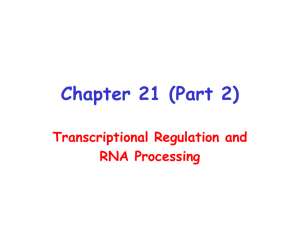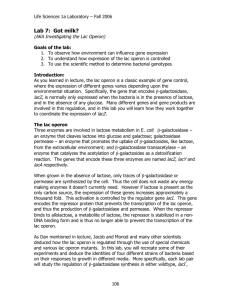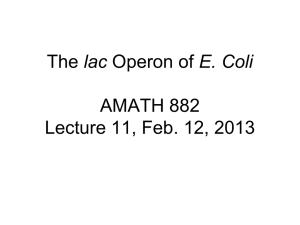transcription presence
advertisement
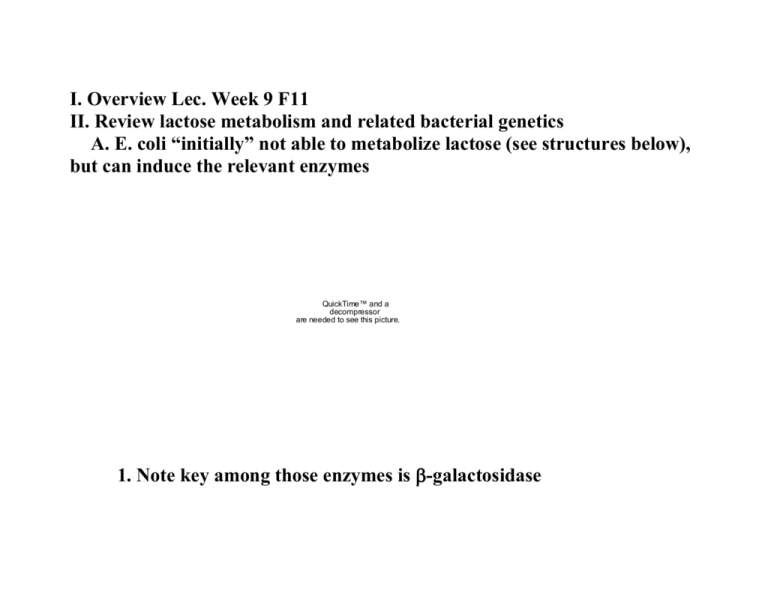
I. Overview Lec. Week 9 F11 II. Review lactose metabolism and related bacterial genetics A. E. coli “initially” not able to metabolize lactose (see structures below), but can induce the relevant enzymes QuickTime™ and a decompressor are needed to see this picture. 1. Note key among those enzymes is -galactosidase 2. A key inducer molecule is a metabolite of lactose, 1,6-allolactose a. Under certain conditions the analogue IPTG is an inducer B. Bacterial genetics experiments (see below and Voet & Voet, 20__ for details) actually informed the model of Jacob and Monod w/ respect to the regulation of lactose metabolism (i.e. lac operon) 1. Notably we can transfer genetic information, e.g. F factor, from an F+ cell to an F- one 2. Moreover other transfers involving an Hfr cell a. These can result in incomplete transfer, forming a partial diploid bacterium (merozygote) b. Interrupting the transfer at various times allows one a way to elucidate “chromosomal components” QuickTime™ and a decompressor are needed to see this picture. QuickTime™ and a decompressor are needed to see this picture. C. Results of these experiments was the first real model of DNA regulation, lac operon QuickTime™ and a decompressor are needed to see this picture. 1. Genes classified by “structural” gene their products *a. Z, -galactosidase b. Y, lactose permease c. A, thiogalactosidase transacetylase 2. Control site a. Promoter *b. Operator *3. Regulatory gene: I (expresses lac repressor protein) 4. Here two “states” a. Absence of inducer i. Here lac repressor protein binds to operator preventing transcription of “structural” genes ii. This prevents the effective binding of RNA polymerase on the operator (see Deuschle et al., 1986) http://www.pnas.org/content/83/12/4134.full.pdf b. Presence of inducer i. IPTG is an example of an inducer that when bound to the lac repressor protein, prevents the resulting complex from binding to the operator ii. Thus transcription of all three “structural’ genes III. Example application: Blue/white screening A. Technique to see if a successful ligation http://en.wikipedia.org/wiki/File:Blue_white_assay_Ecoli.jpg QuickTime™ and a decompressor are needed to see this picture. QuickTime™ and a decompressor are needed to see this picture. X-gal B. Key to this is the availability, to an existing deletion mutant -galactosidase, of a peptide that restores function (see Langley et al., 1975; Messing et al., 1977) http://www.ncbi.nlm.nih.gov/pmc/articles/PMC432510/pdf/pnas00047-0040.pdf http://www.ncbi.nlm.nih.gov/pmc/articles/PMC431673/pdf/pnas00031-0026.pdf For the pGEM®-T and pGEM®-T Easy Vector Systems http://www.promega.com/resources/product-guides-and-selectors/protocols-and-applicationsguide/cloning/ http://www.promega.com/~/media/Files/Resources/Promega%20Notes/82/Technically%20Spea king-%20T-Vector%20Cloning.ashx “… The pGEM®-T Vector and pGEM®-T EasyVector are high-copy number plasmids that contain T7 and SP6 RNA polymerase promoters flanking the multiple cloning region. The promoters are conveniently placed for sequencing of an insert as well as for in vitro transcription of both sense and anti-sense RNAs. The multiple cloning region for each vector is present within the α-peptide coding region of the enzyme β-galactosidase to allow for blue/white screening. ... “ Addendum (Week 10+11) -Note for next “Lab Report” use template (Jablonski et al., 2009) http://nar.oxfordjournals.org/content/38/4/1249.full?sid=eabcd73f-7f83-44bf-89efca8da0b05dae http://www.ndsu.edu/pubweb/~mcclean/plsc431/prokaryo/prokaryo2.htm Catabolite Repression of the lac Operon Lactose is not the preferred carbohydrate source for E. coli. If lactose and glucose are present, the cell will use all of the glucose before the lac operon is turned on. This type of control is termed catabolite repression. To prevent lactose metabolism, a second level of control of gene expression exists. The promoter of the lac operon has two binding sites. One site is the location where RNA polymerase binds. The second location is the binding site for a complex between the catabolite activator protein (CAP) and cyclic AMP (cAMP). The binding of the CAP-cAMP complex to the promoter site is required for transcription of the lac operon. The presence of this complex is closely associated with the presence of glucose in the cell. As the concentration of glucose increases the amount of cAMP decreases. As the cAMP decreases, the amount of complex decreases. This decrease in the complex inactivates the promoter, and the lac operon is turned off. Because the CAP-cAMP complex is needed for transcription, the complex exerts a positive control over the expression of the lac operon

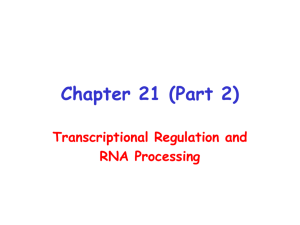
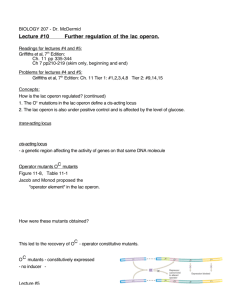
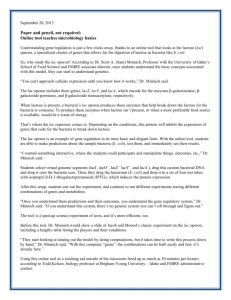

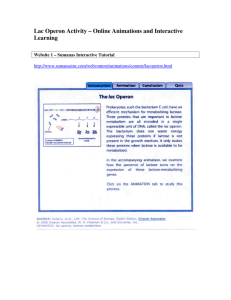
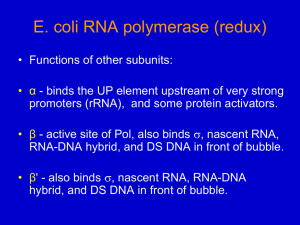
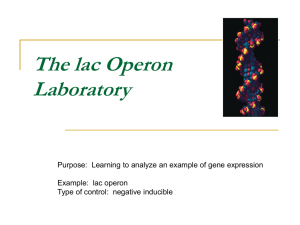
![Lac Operon AP Biology PhET Simulation[1]](http://s3.studylib.net/store/data/006805976_1-a15f6d5ce2299a278136113aece5b534-300x300.png)
